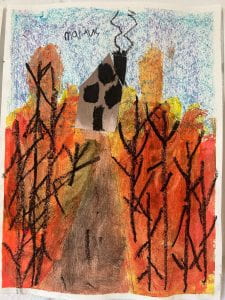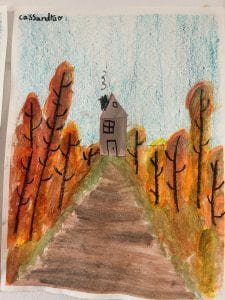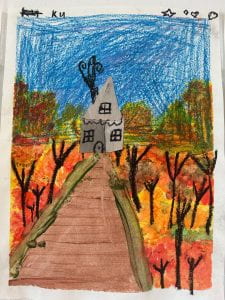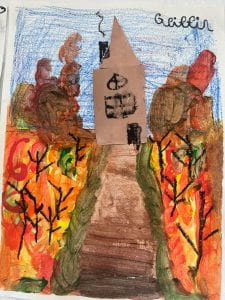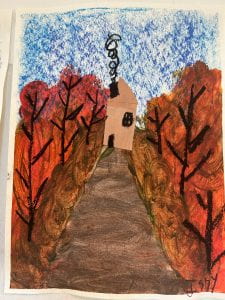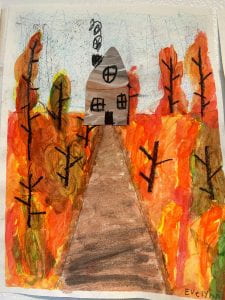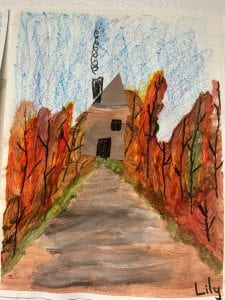My Special Grown Up
Over the past two weeks students have been focusing on making connections while they read to help them with deeper thinking and understanding. They have also been writing to connect-writing in such a way that the reader can connect to the ideas.
Students began this culminating writing project with an interview. They chose an adult at home and conducted a brief interview to gather information. Once back at school, students used sentence stems to write some complex sentences. The next stage was to use a graphic organizer to organize their information into a paragraph structure. The paragraphs were then drafted and published on Google Slides.
Where Would You Prefer To Live?
We have been exploring the various land regions throughout Canada. Students have watched videos, looked at pictures and read articles about the regions. Grade 4’s looked at the whole of Canada and Grade 3’s focused on Ontario. As a culminating project students chose 2 regions to compare. They started with Venn diagrams and then used a T-chart to generate ideas about areas they would enjoy and those that they would not. All of this was then put together in paragraph format and published on Google Slides.
Northern Lights Art Project

 For this art project students learned to work with a new medium-chalk pastels. They first learned a bit about the northern lights. We talked about landscapes and perspective. Then we explored different techniques to use with chalk pastels.
For this art project students learned to work with a new medium-chalk pastels. They first learned a bit about the northern lights. We talked about landscapes and perspective. Then we explored different techniques to use with chalk pastels.
The last step was to add some stars with paint. The results are beautiful!
Be A Bridge
This lesson started out in the library with Mrs. Randall, our librarian, reading a story, Be A Bridge by Irene Latham and Charles Waters.
After a short discussion, students thought about what they could do, today, to be a bridge. They recorded their ideas.
Next, students engaged in a STEM activity in which they needed to use the provided materials to build a bridge that would span the river.
People and Environments
We have begun a new social studies unit: People and Environments. While we are learning together and blending the two programs, the grade 4’s are focusing on The Political and Physical Regions of Canada and the grade 3’s are focusing on Living and Working in Ontario.
Over this past week we have been looking at how Canada is divided, first by provinces and territories and then by physical regions.
Students worked on looking critically at pictures and describing the land.
My Imaginary Monster
Our student teacher, Miss Moss, engaged the students in a mini-unit about descriptive writing. She began with identifying nouns, verbs, and adjectives. Students then engaged in a reading of “I Need My Monster”. This mentor text is rich in descriptive sentences, using interesting adjectives and verbs.
Then, it was time for students to write. They began the writing process with a brainstorm web of ideas of their own imaginary monster. Next, they organized their ideas using a graphic organizer. Then, they drafted their paragraphs on a Google slide and used the success criteria to revise and edit.
The last step was to use AI technology to generate a photo of their monsters based on their writing.
Thanks, Miss Moss, for this fun, engaging writing project!
The Rainbow Fish
On Monday we had the opportunity to go to the local high school to watch a production of “The Rainbow Fish” put on by the grade 11/12 drama production class. For many students it was the first time that they were in a theatre watching a live play. We all loved it!
When we got back we used that experience as inspiration for some paragraph writing. Together we constructed a topic sentence, brainstormed ideas for the middle, and a concluding sentence. Students then got to work writing their paragraphs independently.
Into the Woods with Van Gogh
 We started this project learning a bit about Vincent Van Gogh and looking at some of his art works. Then it was on to our own creating!
We started this project learning a bit about Vincent Van Gogh and looking at some of his art works. Then it was on to our own creating!
First, students learned about a horizon line and how the size of objects change depending on how far or near they are. Students drew a horizon line and a road/path using one-point perspective. They observed that the road narrows as it gets further away from the viewer.
The next step was to use pastels to colour the sky. Students considered texture and colour to create the sky.
Then it was time to begin painting the foliage. Students used a circular motion and blended colours to create an Autumn scene. Painting the road/path was next. Students considered the direction of their brush strokes as well as blending colours to create their roads/paths. Students used some painted paper to create a cabin and added details with a pastel.
The completed projects are beautiful!!
Thank-you to Painted Paper Art for the inspiration
Community Agreements
In our classroom we have 4 community agreements:
- Right To Pass
- Attentive Listening
- Appreciation
- Mutual Respect
We have taken a lot of time to establish these rules so that our classroom is a safe and positive place for all to be. Today we completed an art project to “seal the deal”.
We talked a bit about hand shakes and how some people show their agreement to a deal with a handshake. So, we decided to put our hands on our Community Agreement board as a symbol of a handshake.
First students traced their hands. Then they used a variety of lines, shapes, and designs to make their hands unique. We talked about how the designs they used can reflect their personalities and show a variety of feelings. Then, students used markers, water and paintbrushes to paint their hands.
The last step was to reflect on the agreements and think about which ones were the most important. We came to the conclusion that they are all important!















